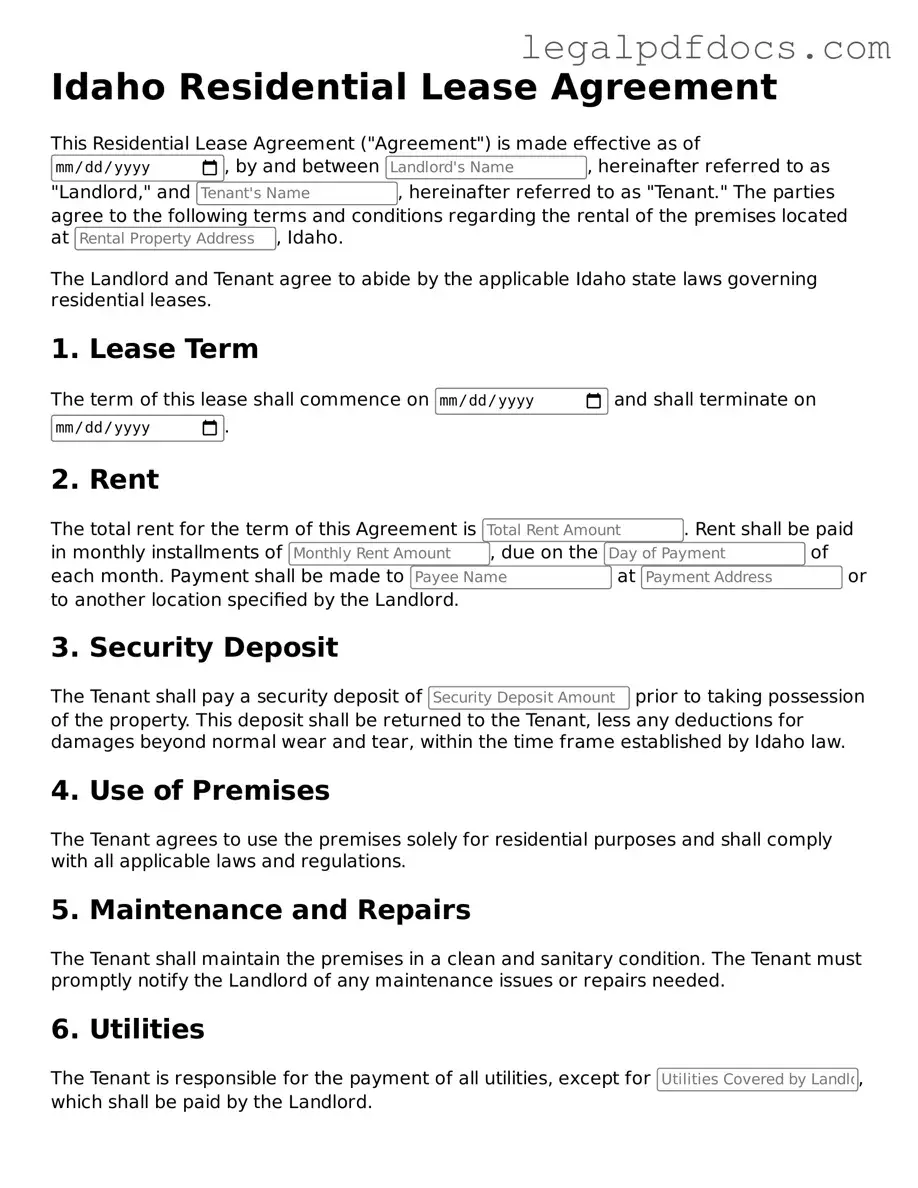Official Residential Lease Agreement Form for Idaho
The Idaho Residential Lease Agreement is a legal document that outlines the terms and conditions between a landlord and tenant for renting a residential property in Idaho. This agreement serves to protect the rights of both parties while ensuring a clear understanding of responsibilities and expectations. Ready to secure your rental arrangement? Fill out the form by clicking the button below.
Open Residential Lease Agreement Editor Here
